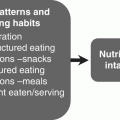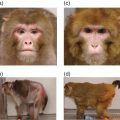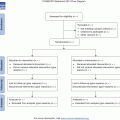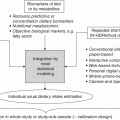5 Barbara Burlingame and U Ruth Charrondiere Food and Agriculture Organization of the United Nations Food composition activities include sampling and sample preparation, data generation, data compilation, data dissemination and data use. Historically, food composition activities were limited to data on a small subset of nutrients, usually classified as proximates, vitamins, minerals, and occasionally fatty acids and amino acids. Increasingly, food composition work deals with data for any component found in food that can be measured chemically, biologically or physiologically: a greater range of conventional nutrients and different forms/activities of those nutrients, bioassay data such as measurements of protein quality or glycaemic index, bioactive non-nutrients, anti-nutrients, pesticide residues, heavy metals, additives and more. A single food composition database, with proper documentation, can accommodate data on all these types of components. However, these data are rarely combined and published in a single database. Food composition data are useful to many sectors and professions within those sectors. Health, agriculture, environment and trade (including the food industry) are the most notable sectors. The agriculture sector has had a dominant role over many decades in food composition research and service. The Food and Agriculture Organization of the United Nations (FAO) has a long history of food composition work dating back to its inception in the 1940s and it has been the United Nations (UN) agency host for the International Network of Food Data Systems (INFOODS) since 1998. The UK and USA have even longer histories in food composition work dating back to the late nineteenth century, again in the agriculture sector, with responsible agencies being the Ministry of Agriculture, Fisheries and Food and the United States Department of Agriculture (USDA) respectively. The other historically dominant sector is health. More than half the participants in food composition conferences, and the researchers publishing food composition papers and books, are health-sector professionals. It is often the health sector that provides a high percentage of the funding for food composition work, and the sector that claims the highest percentage of data users. Involvement of the environment sector is becoming increasingly important as it relates to the composition of food biodiversity; that is, food described at the taxonomic level below species, and wild, neglected and under-utilised species. The environment sector also has a leading role in determining and monitoring chemical contaminants in the food supply. Last, trade has emerged as a sector with a great interest in food composition. Nutrient information panels on processed foods have become regulatory requirements in many countries, and analytical data on both nutrient and contaminant content are necessary documentation for global food trade. Food retailers, restaurants and other food service providers are using food composition data in response to consumer demand. More details on the importance of food composition to different sectors are provided later in this chapter in the section on data use. INFOODS was established in 1983 by the United Nations University (UNU), with an organisational framework and international management structure that include a global secretariat and regional data centres. Its mandate is the ‘Promotion of international participation and cooperation in the acquisition and dissemination of complete and accurate data on the composition of foods, beverages and their ingredients, in forms appropriate to meet the needs of the various users (government agencies, nutrition scientists and educators, health and agriculture professionals, policy makers and planners, food producers/processors/retailers and consumers).’ In the mid-1990s, FAO joined UNU in partnership for INFOODS. The main activities of INFOODS at the international level include the development of technical food composition standards, guidelines and tools, often through expert consultation processes; the development of technical publications and manuals; assistance to regional data centres and individual countries in developing their food composition activities; capacity development through classroom and online courses; and the biennial International Food Data Conference, which has been held in alternate years since 1993, with each second conference as an official satellite to the IUNS International Congress of Nutrition. There are 17 regional data centres in operation, most with well-established and effective coordination. Important activities include the preparation and updating of regional food composition tables, in both electronic and printed form (e.g. in West Africa, Pacific Islands, ASEANFOODS, LATINFOODS), convening of regular food composition coordination activities and technical task forces involving all the individual countries in the region, and participating in standard-setting consultation convened by the INFOODS Secretariat. Most countries have food composition activities of one form or other. A national food composition programme is usually the result of the combination and coordination of activities, within some defined administrative framework, related to food composition data generation, compilation, dissemination and use. A steering committee is a useful structure, functioning well in many countries. This steering, or advisory, committee is ideally composed of individuals directly involved in food composition work: data generators, data compilers and data disseminators. Crucial to the effectiveness of a steering committee is the involvement of data users. The users can be selected from among dietitians, nutritionists, food industry personnel and consumer group representatives. Often a single organisation holds the overall responsibility for managing a national food composition programme, yet it is rare that a single organisation accomplishes all the activities itself. Regardless of their affiliations, the laboratory-based data generators must interact closely with the data compilers, and the compilers must interact closely with the data users. The data compilers therefore serve the central function of, and usually serve in the role of, data disseminators (that is, they publish the data, electronically and/or as printed tables). In most countries there are other agencies with activities that have direct or indirect relationships with food composition data, but operate in concert with the national programme. In addition to the desirability of a coordinated national approach for accomplishing essential activities, it is productive and important for a national food composition programme to operate in conjunction with its regional data centre, and with ongoing international activities. Data generation is the process whereby foods are sampled, prepared for analysis and analysed in the laboratory. Data compilation is the process whereby the data from the laboratory and other sources are examined, manipulated and incorporated into a food composition database. Data dissemination refers to the preparation and publication of books and electronic data products, which are made available to users in the various sectors. Data use also includes the application of these data to tasks, projects and programmes in the various professional sectors. Sampling – that is, the process and procedures for obtaining foods that are representative of those available and consumed – is fundamental to any food composition activity. Preparation of a sampling plan often requires the involvement of all the major contributors to a food composition programme. Data generators must be involved in sample collections, or at least the scheduling of sample collections, so that samples may be immediately and properly prepared for analysis. Data compilers must be involved because information on the sampling plan, and details such as when and where sampling took place, are important parts of a food composition database’s metadata. Data users must be involved because they have the best appreciation of the foods that need to be analysed, and often of the location from which the samples should be collected. The services of a statistician are useful for developing a sampling plan, because representativeness is dictated by the number of food units collected – and analysed – to achieve the goal. The goal might be to compare compositional differences between cultivars, or to achieve year-round, nationwide mean values for a food composition database. The overall quality of food composition data is determined largely by the sampling plan. The collected samples must be properly handled so that they arrive at the laboratory without changes that might affect their composition. The key component, crucial to the correct determination of almost all other food components and most easily affected by improper handling and storage, is water (moisture). Once samples are delivered and documented, they are prepared for analysis. Preparation may involve separation of the edible from the inedible portion (for example, removal of bones from fish, or skins and seeds from pumpkins); kitchen-type preparation (for example, boiling rice); or combining of many samples into fewer samples (for example, combining five brands of similar biscuits into one representative composite sample). After this type of preparation, samples will be stored or immediately analysed. As with sample collection and sample handling, proper documentation of all aspects of sample preparation is essential. Most laboratories undertake a limited range of analyses for food composition purposes. This includes a set of core components and then additional components of interest, for example laboratory research dealing with diet-related health problems. Core nutrients usually include the complete range of proximate components (water, nitrogen for the protein calculation, fat, available carbohydrate, dietary fibre, ash, alcohol where relevant, and an energy value using factors applied to the energy-yielding proximates), some vitamins and some nutrient elements. Additional components of interest often include cholesterol, individual fatty acids and aggregations of fatty acids (for example, total saturated fatty acids), carotenoids (both provitamin A carotenoids and antioxidant carotenoids with no provitamin A activity), other bioactive non-nutrients, heavy metals and some so-called anti-nutrients (for example, phytates). Proper laboratory practices must be strictly adhered to, and laboratory quality assurance and quality control procedures, and details of analytical methodologies, must be properly documented. Table 5.1 provides an overview of analytical methods commonly used for macronutrients, along with their applications and limitations. Table 5.2 provides an overview of commonly measured food components, their recommended units of measure for most food composition purposes, and INFOODS tagnames, the use of which will minimise misinterpretation of the food component. Table 5.1 Macronutrient analysis.
Food Composition
5.1 Introduction
5.2 Sectors
5.3 The Organizational Elements
The international level
The regional level
The national level
5.4 Technical elements
Data generation
Sampling
Analyses
Food component
Available method of analysis
Limitation
Application
Water (moisture)
Air oven*
Caramelisation of sugars, degradation of unsaturated fat, loss of volatiles
This method is applicable to all foods at 60✘ C. At 100✘ C, it is applicable to all foods except those rich in fat and sugar
Vacuum oven*
Loss of volatiles
Freeze-drying*
Slow. Care must be taken to avoid residual water in samples
Applicable to most foods
Microwave oven
Charring
Applicable to medium- or high-moisture foods only
Dean and Stark distillation
Safety of solvents used
Applicable to foods high in volatiles*
Karl Fisher
Applicable to low-moisture, hygroscopic foods
Physical methods (NMR, NIR)
High cost and needs calibration for each food group
NMR is applicable to most foods. NIR is only established for cereals and some other foods
Chromatography (GLC, GSC)
High cost
GLC is applicable to meat and meat products only. GSC is applicable only to some meat products
Total fat
Continuous extraction (single solvent, also called Soxhlet)
Time consuming. Extracts cannot be used for fatty acid studies. Incomplete extraction from many foods (dry analytical samples). Non-comparable value for cereals
Applicable to low-moisture foods and non-cereal foods
Acid hydrolysis
Some hydrolysis of lipids. Extracts cannot be used for fatty acid studies
Applicable to all foods except dairy and high-sugar products
Acid hydrolysis and capillary GLC
High cost. This method is NLEA-compliant
Applicable to most foods
Mixed solvent extraction*
Complete extraction from most foods. Extract often needs clean-up
Applicable to most foods and extract can be used for fatty acid analysis
Alkaline hydrolysis
Validated for dairy foods only
NIR
High cost. Requires extensive calibration against other methods
Established only for cereals
Fatty acids
HPLC
High cost
GLC*
Moderate to high cost
Applicable to all foods. If used for trans fatty acids, capillary techniques are required
Infrared absorption (for trans fatty acids)
High cost. Some interference
Applicable to all foods
Total nitrogen/ protein
Kjeldahl (for total nitrogen)*
Minor interference from inorganic nitrogen. Toxic wastes
Applicable to all foods
Dumas (for total nitrogen)*
High cost, inclusion of inorganic nitrogen and analytical portion size
Applicable to all foods
Radiochemical methods (for total nitrogen)
Very high cost of instrumentation
Applicable to most foods
Formol titration; Biuret; Folin’s reagent (for protein)
Specificity
Applicable to dairy products only
Alkaline distillation (for protein)
Specificity
Applicable to cereals only
Dye-binding (for protein)
Specificity
Applicable only to specific foods, and some cereals and legumes
NIR (for protein)
High cost. Number of calibration samples
Applicable to some foods
Amino acids (AA)
GLC, preceded by acid hydrolysis for most AA. Alkaline hydrolysis required for tryptophan. Special hydrolysis conditions required for sulphur AA and acid-sensitive AA.
Moderate to high cost. Choice of derivative is critical. AA need to be derivatized prior to chromatography
Applicable to most foods
HPLC,* preceded by acid hydrolysis for most AA. Alkaline hydrolysis required for tryptophan. Special hydrolysis conditions required for sulphur AA and acid-sensitive AA. AA usually derivatised prior to chromatography
High cost
Applicable to all foods
Ion-exchange chromatography,* preceded by acid hydrolysis for most AA. Alkaline hydrolysis required for tryptophan. Special hydrolysis conditions required for sulphur AA and acid-sensitive AA.
High cost. Hydrolytic losses of more labile AA and slow release of branched-chain AA
Applicable to all foods
LC-MS
High cost
Applicable to all foods
Colorimetry (Tryptophan and sulphur containing AA, lysine)
Not sensitive enough
Applicable to all foods
Microbiological assays
Tedious, time-consuming, non-reproducibility
Applicable to all foods
Alcohol
Distillation*
Interference with volatiles
Applicable to all foods
GLC*
Applicable to all foods
Specific enzyme method*
Applicable to all foods
Sugars, total (mono- and disaccharides)
Density
Accurate for sucrose
Applicable to sugar solutions
Refractive index
Empirical calibration required
Applicable to sugar solution
Polarimetry
Close attention to standardised methods is essential
Applicable to single sugars or simple mixtures only
Reductiometric
Non-reducing sugars, sucrose and invert sugar mixtures
Applicable to reducing sugars
Colorimetric
Specificity
Applicable to single sugars and simple mixtures
Specific enzyme method*
Reagents can be expensive
Applicable to glucose and complex mixtures
GLC
Need for derivatives
Can be applied to complex mixtures
HPLC*
Moderate to high cost. Choice of columns, detectors are crucial
Can be applied to complex mixtures
Polyols
Specific enzymatic method
Specificity of enzymes
Limited to a few polyols only
HPLC*
Moderate to high cost. Lack of standardised procedures; choice of column
Can be applied to complex mixtures
Microbiology
Acyclic polyol only
All foods
Oligosaccharides
Specific enzymatic procedures
Moderate to high cost
Applied for selective hydrolysis and separation
GLC
Moderate to high cost. Choice of column
Can be applied to complex mixtures
HPLC
Moderate to high cost
Can be applied to complex mixtures
Starch
Polarimetry
Needs very careful calibration
Applicable only to some cereal foods
Dilute acid hydrolysis using a general sugar method
Interference from any NSP present
Applicable to highly refined foods that are low in NSP
Dilute acid hydrolysis and glucose-specific method
Presence of β-glucans
Applicable only to foods low in β-glucans
Enzymatic hydrolysis and glucose-specific method*
Choice of enzymes and conditions
Applicable to all foods
Dietary fibres
Total dietary fibre
AOAC method for dietary fibres (Prosky et al.),* an enzymatic–gravimetric method
Time-consuming
Applicable to all foods
Non-starch polysaccharides (NSP)
Enzymatic hydrolysis and removal of starch. Acid hydrolysis of NSP, GLC, HPLC separation of component monosaccharides. Colorimetric analysis of monosaccharide (Englyst et al.)
Moderate to high cost. Resistant starch must be treated before hydrolysis. GLC requires preparation of derivatives. Gives only total values. This method is not robust
Applicable to all foods
Resistant starch
Enzymatic hydrolysis of starch before and after treatment with alkali or DMSO
Choice of enzymes and conditions
Applicable to all foods
Inorganic material analysis: applicable to all foods after defatting and drying, especially for food high in fat and/or water content
Food component
Available method of analysis
Limitations
Total ash
Dry ashing
Not suitable for mineral analysis of volatile minerals because of their partial loss
Wet ashing
Small sample throughput
Cations
Na*, K*, Ca, Mg
Flame photometry
Interference
Na, K, Ca*, Mg*, Fe*, Cu*, Zn*, Mn*, Co*, Cr*
Atomic absorption spectrometry (AAS) with electrothermal furnace
Moderate to high cost. Interferences from anions; special suppression techniques
Se*
Hydride-generation AAS
Moderate to high cost
Fluorimetry
all cations
Plasma-emission spectrometry (=inductively coupled plasma spectroscopy ICP) ideally coupled with mass spectrometry (MS)*
Very high cost. Matrix effects need to be controlled
K, Mg, Fe, Cu, Zn
Colorimetry
Extracting techniques. Difficult for K and Zn
Ca and Mg
Classical precipitation and titration
Size of analytical sample; skilled techniques
Anions
Phosphorus
Colorimetry
ICP-MS
Very expensive
Chloride
Titrimetric
Ion-specific electrode (ISE)
Interference
ICP-MS
Very expensive
Automated conductimetry
High cost
Iodine
Microdistillation
Laboratory contamination
ISE
ICP-MS
Very expensive
Alkaline dry-ashing
GLC
High cost
Fluorine
Microdistillation
Time-consuming
ISE
Polarography
Sulphur
Gravimetric
X-ray fluorescence
High cost
ICP-MS
Very expensive
Nitrite
Colorimetry
ISE
Nitrate
HPLC
High cost
Vitamin analysis: applicable to all foods
Food component
Available method of analysis
Limitations
Retinol
Colorimetry
Obsolete (Carr and Price 1926). Low recoveries of retinoids
HPLC*
Moderate to high cost
Carotenoids
![]()
Stay updated, free articles. Join our Telegram channel

Full access? Get Clinical Tree

 Get Clinical Tree app for offline access
Get Clinical Tree app for offline access




